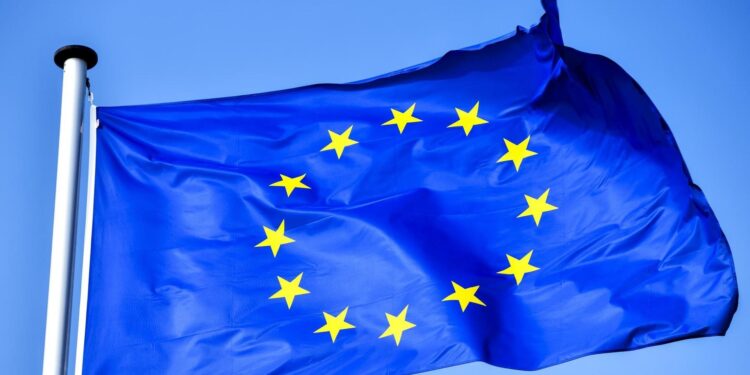European Commission President Ursula von der Leyen’s flight reportedly encountered suspected Russian GPS jamming while transiting Bulgarian airspace, raising fresh concerns over escalating cyber and electronic warfare tactics in the region. The incident, which occurred amidst heightened tensions between the European Union and Russia, underscores the growing challenges facing EU leaders in ensuring secure and uninterrupted communications during official travel. This development, reported by authorities and covered by The Economic Times, marks a significant moment in the complex geopolitical contest playing out over control of critical navigation systems.
EU’s Von der Leyen’s Flight Disrupted by Suspected Russian GPS Jamming in Bulgarian Airspace
During a recent flight over Bulgarian airspace, European Commission President Ursula von der Leyen experienced a significant disruption attributed to suspected Russian interference involving GPS signal jamming. This unprecedented episode raised immediate concerns about the security of aviation navigation systems within EU borders, especially amid ongoing geopolitical tensions in Eastern Europe. Preliminary investigations suggest that the jamming tactics aimed at the aircraft’s Global Positioning System signals forced pilots to rely on alternative navigation methods, increasing risks during the flight.
Key aspects of the incident include:
- Temporary loss of GPS navigation for critical onboard systems
- Heightened alert protocols activated by the flight crew
- Swift response from Bulgarian aviation authorities and EU security agencies
- Potential diplomatic repercussions escalating between the EU and Russia
| Aspect | Detail |
|---|---|
| Location | Bulgarian Airspace |
| Suspected Source | Russian Electronic Warfare Units |
| Impact | Navigation Disruption, Flight Delay |
| Response | Enhanced Security Measures Initiated |
Implications for European Aviation Security and Geopolitical Tensions
The suspected Russian GPS jamming incident involving EU Commission President Ursula von der Leyen’s flight over Bulgaria marks a significant escalation in the tactics deployed amid growing geopolitical frictions. Such disruptions not only compromise the safety protocols that underpin European civil aviation but also raise urgent questions about the resilience of critical navigation infrastructure in contested airspaces. Aviation authorities across the continent are now urged to reassess the vulnerabilities within existing GPS-dependent systems, emphasizing the need for enhanced signal authentication and alternative positioning technologies to prevent similar occurrences.
Beyond immediate security concerns, this event underscores the deepening geopolitical tensions between the European Union and Russia. Analysts warn that targeted electronic warfare, such as GPS jamming, could become a preferred method to assert influence without direct military confrontation. The EU’s response will likely involve both diplomatic pressure and strategic investments in aviation security, including:
- Expanding resilient satellite navigation networks.
- Implementing comprehensive cross-border monitoring systems.
- Strengthening international aviation security collaboration.
- Investing in anti-jamming and spoofing countermeasures.
| Security Challenge | Potential Solution | Strategic Impact |
|---|---|---|
| GPS Signal Jamming | Multi-frequency Positioning Systems | Reduced Navigation Disruption |
| Cross-border Airspace Monitoring | Integrated Radar & Satellite Data | Improved Threat Detection |
| Information Sharing | EU-Russia Diplomatic Channels | De-escalation of Tensions |
Strengthening Countermeasures and Recommendations for Protecting EU Airspace from Cyber Interference
Safeguarding the integrity of European Union airspace demands an urgent elevation of cybersecurity protocols, particularly in light of recent GPS jamming incidents suspected to be linked to state-backed actors. Robust detection systems must be prioritized to identify and mitigate unauthorized signal interference swiftly. Developing an integrated network of ground-based and satellite monitoring stations will enable real-time tracking of anomalies. Moreover, investing in advanced cryptographic navigation aids and redundancy measures can reduce dependency on vulnerable GPS signals, ensuring uninterrupted and secure aircraft navigation.
In addition to technological upgrades, a comprehensive strategic framework involving cross-border cooperation and information sharing is essential. EU member states should amplify joint training exercises and simulations to prepare aviation stakeholders against cyber interference threats. Policies advocating for stringent regulatory oversight of commercial UAVs and the aviation ecosystem will further curb vulnerabilities. The recommendations below outline key areas demanding immediate and sustained attention:
- Enhanced Signal Authentication Techniques: Implementing multi-layer verification to detect spoofing attempts.
- Investment in Alternative Navigational Systems: Encouraging use of Galileo and other satellite constellations alongside GPS.
- Coordinated Incident Response: Establishing a fast-reacting EU cyber task force dedicated to aviation threats.
- Policy and Regulatory Harmonization: Standardizing cybersecurity requirements across all member states.
| Countermeasure | Target Threat | Expected Outcome |
|---|---|---|
| Real-time GPS Signal Monitoring | Signal Jamming & Spoofing | Rapid Detection & Mitigation |
| Multi-Constellation Navigation | Single System Failure | Improved Navigation Reliability |
| EU Cyber Aviation Task Force | Coordinated Cyber Attacks | Enhanced Incident Response |
| Stringent UAV Regulations | Malicious Drone Use | Reduced Aerial Threats |
In Conclusion
As investigations into the suspected GPS jamming of EU Commission President Ursula von der Leyen’s flight over Bulgaria continue, the incident underscores growing concerns about the security of critical aviation infrastructure amid escalating geopolitical tensions. European authorities have vowed to enhance cooperation and strengthen measures to safeguard navigational systems against such disruptions. The event adds to an increasing list of cyber and electronic interference incidents attributed to state actors, highlighting the evolving challenges faced by the EU in maintaining the integrity and safety of its airspace.
















